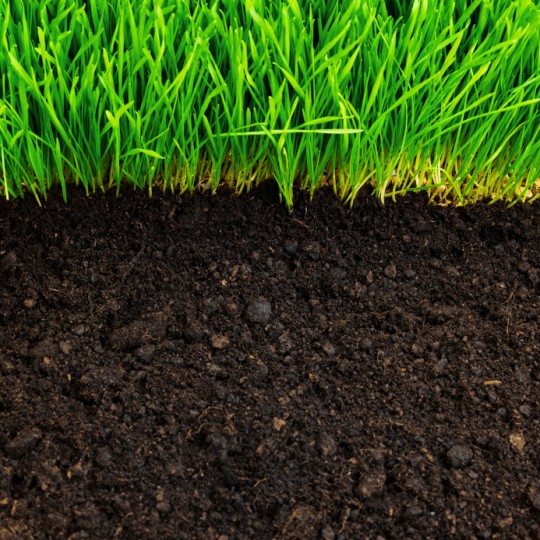Soil Testing: Learn About Your Lawn
Posted
March 17, 2016

Your lawn’s soil quality reveals a lot about its health. It can also affect whether your grass is green and lush or brown and dry. Read on to learn about three different methods of soil testing and how the results indicate what treatments are needed to create a healthy lawn.
Determine Your Type of Soil
Your soil’s texture can determine what types of turf can thrive in your yard. Figure out your soil type by grabbing a fistful of soil and squeezing. The soil in your hand should fit one of these descriptions:
- Clay: soils with high clay contents should pack together firmly in your hand. Clay-based soil contains large amounts of potassium, calcium, and magnesium–nutrients important to a plant’s health. Other particles in clay soil are unable to absorb nutrients, sometimes making it necessary to supplement your soil with organic mulch.
- Loam: this soil sticks together at first, but falls apart if prodded. The ideal soil type, loam-type soil is usually higher in nutrients and boasts good airflow and drainage.
- Sandy: sandy soil does not stick to itself and will fall apart as soon as you loosen your grip. Oxygen easily penetrates sandy soils, preventing plants from forming strong roots. Wetting agents and organic mulches are your best bets for growing non-hardy plants in sandy soils.
Drainage Testing
Your lawn’s drainage determines the quality of the roots your plants will grow and whether your lawn is susceptible to disease. To test your lawn’s drainage, dig a hole about one foot deep and fill with water. Once the water drains completely, fill it again and monitor the length of time it takes to drain the second time around.
- One hour or less: the water is draining a little too fast. This could be a sign that your soil is too loose, which can prevent your plants from growing strong roots. Mix a little mulch into your soil to thicken it. This can help create a stronger foundation for plant roots.
- More than one hour: this is an indication of decent drainage and further action is likely not needed.
- More than four hours: this is a symptom of improper drainage. Your soil might be too compacted, which blocks plants from forming deep roots. To loosen the soil and improve your lawn’s drainage, aeration treatments may be necessary.
Test Soil pH
Buy a DIY pH test at your local garden store. The pH test can help determine the type of fertilizer your lawn needs based on its acid and alkaline contents.
Need Help with Soil Testing?
For assistance in testing your soil quality, call Cardinal Lawns today. Our professionals are dedicated to helping you maintain a healthy, beautiful lawn.

Download Your FREE Spring Lawn & Landscape Guide
Before your landscape begins to bloom this spring, take some time to perform basic inspection and maintenance on your lawn and garden. Save money and get a great looking lawn & landscape in the spring!